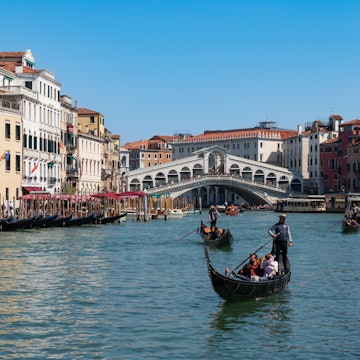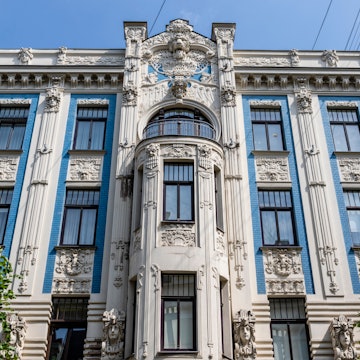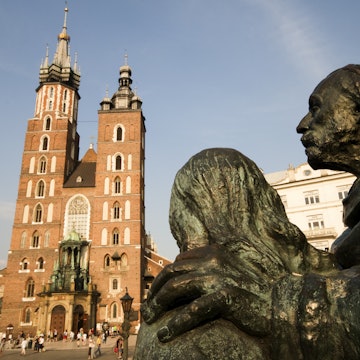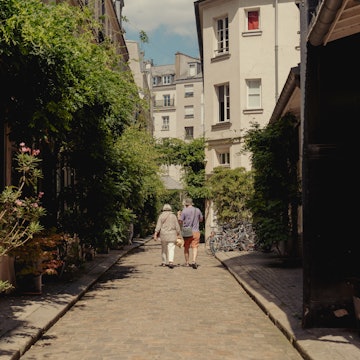
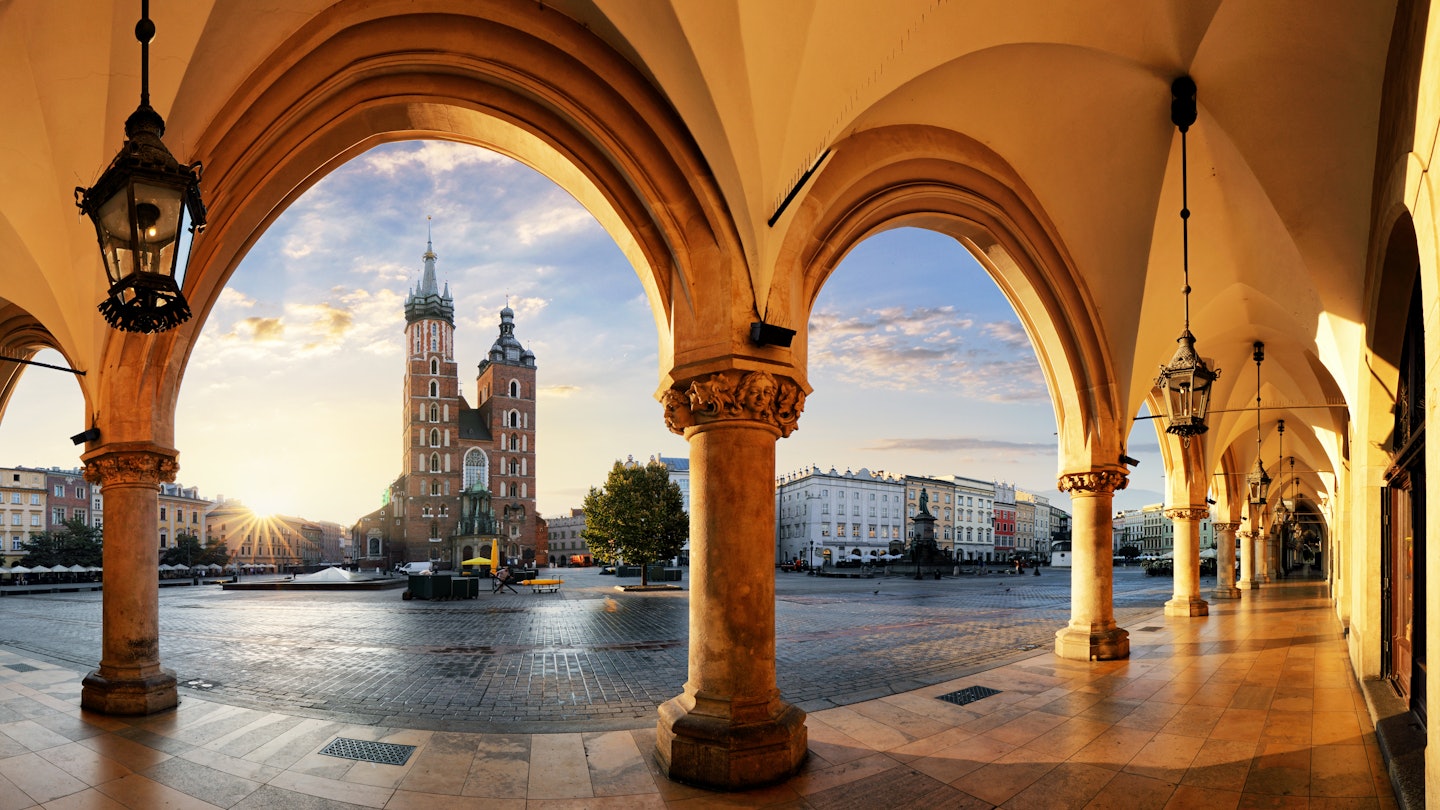
Kraków at sunrise. TTstudio/Shutterstock
Poland’s geographical diversity – high mountains in the south, plains in the middle and coast in the north – means travelers have a reason to visit Poland at every time of year.
Accommodation prices will rise and fall throughout the year, depending on whether you’re staying near the popular Baltic beaches during the peak season in July and August or the snowy Tatra Mountains during ski season.
Temperatures in Poland reach their lowest point of the year in January, but it’s still fairly easy to travel to major cities during this time. For the most enjoyable weather, visit Poland during early fall or late spring. From energetic festivals to bustling cities and serene natural beauty, deciding the best time to visit will depend on your desired activities.

May to September is the best time for festivals and fantastic weather
Late spring and early fall offer the best weather of the year in Poland, with highs in the low 20s°C (mid-60°F). You will be met with crowds during the summer months with the country’s high season starting in June. While beach season sees peak accommodation prices by the Baltic, rates are a little more stable in the cities across the year.
The summer months can be sweltering in Poland, and the Baltic’s weather can be fickle, even in July and August when the average temperatures reach a high of 24°C (75°F). You will probably enjoy a cool ocean breeze, but the seven days of rainfall during the summer months can ruin beach camping holidays even at the height of the season.
Poland also has a wide variety of festivals and events in the summer. Head to Lublin for summertime festivals, such as the Magicians’ Carnival in July. Also in July, the International Sopot Festival is like an open-air Eastern European Eurovision. In Gdańsk, you can attend Poland’s Shakespeare Festival which draws performers from around the world.
When the sun bakes Sopot and Świnoujście – and Kołobrzeg is cooking – it may be time to get out of Poland’s overheated cities. At 1310m (4300ft), Turbacz is Poland’s highest peak and while the best time to hike it is on a crisp autumn day, you can stuff yourself with wild blueberries in August or hike through purple saffron crocus meadows in May.
September is arguably the loveliest time to hike in Ojców and Roztocze National Parks and the Świętokrzyski Mountains, as you witness the leaves changing color.
Key events: Midsummer’s Night, Dominican Fair, International Festival of Highland Folklore, Jewish Culture Festival, Poland’s top Shakespeare Festival, Poznań’s Old Jazz Festival, Festival of Mountain Folklore, National Festival of Polish Song, Wine Festival, Days of the Sea Festival

October to December is the best time for dwindling crowds and Christmas spirit
Temperatures take a dive in October and November with highs of 13°C (55°F) and 6°C (43°F), respectively. Polish Independence Day falls on 11 November, but in Poznań, it’s also St Martin’s Day, a time of parades and general merriment, including the scoffing of special St Martin’s Day sweet croissants.
The Baltic beaches may be windswept and deserted in December, but the party’s starting on the ski slopes of the Tatra Mountains. Shared with Slovakia to the south, the Tatra Mountains are Poland’s highest range and a natural nirvana for those who like to strap on skis in the winter. Accommodations in the mountains can be more expensive during this time, while the city rates are more stable.
’Tis the season for mulled wine and gingerbread at Yuletide markets come this time of the year. Christmas markets are lively in Lublin and Zamość, transforming their main squares in the excitement of Christmas. In particular, Kraków’s Christmas market is one of the best in Eastern Europe and attracts visitors by the hundreds of thousands.
Layer up against the cold, as Poland sees considerable snowfall. From October through December in Warsaw, the max average temperatures range from 2°C (36°F) to 13°C (55°F). On the plains and in mountain valleys, -20°C (-4°F) is not unusual. Be prepared.
On the Snow is the best place to go to find out just how much snow has fallen in the mountains of southern Poland and what’s likely to drift out of the sky in the coming days.
Key events: Kraków’s Christmas market, St Martin’s Day, Polish Independence Day

March to April is the best time for Poland's colorful religious culture
March marks the end of Poland’s ski season and the start of spring weather. Tourism is underway but not in full flood. Wrocław’s Jazz on the Odra festival in April is a major draw. Easter across Poland is a great time to witness the country’s colorful folk and religious culture.
Spring is also an excellent time of year for outdoor activities in Małopolska’s national parks; hike without the summer crowds and marvel at the abundance of flowers. April may not be the perfect time to hit the pre-season Masurian lakes, but the first hints of spring can already be bringing cafe tables outdoors again in Kraków and Wrocław. Accommodation prices tend to be low during spring when average daytime temperatures tend to warm up to 7°C (45°F) and 14°C (57°F) max in March and April.
Key events: Jazz on the Odra, Easter
This article was adapted from Lonely Planet's Poland guidebook published in July 2024.






